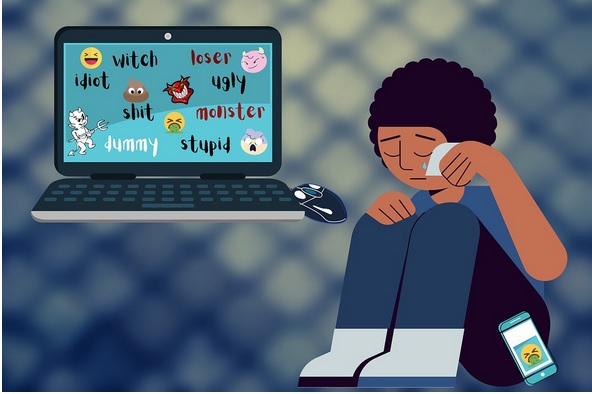
Effective strategies on how to discuss cyberbullying with your child/children to help keep them safe online. Psychological impact it can have on them if conversation is ignored or avoided.
The rapid rise of digital communication has led to an increase in cyberbullying, making it crucial for parents to discuss online safety with their children. According to a 2022 Pew Research Center study, 59% of U.S. teens report experiencing some form of cyberbullying. This article explores how to effectively communicate with children about cyberbullying, provide them with the necessary tools to stay safe online, and mitigate potential risks.
Understanding Cyberbullying
Cyberbullying is the use of digital platforms such as social media, messaging apps, and gaming forums to harass, threaten, or humiliate others. Common forms of cyberbullying include:
- Harassment: Sending repeated, offensive, or threatening messages.
- Doxxing: Publishing private information without consent.
- Exclusion: Intentionally leaving someone out of online groups or conversations.
- Impersonation: Creating fake accounts to mock or defame someone.
- Rumor Spreading: Sharing false or misleading information to damage a person’s reputation.
Cyberbullying differs from traditional bullying because it can occur anonymously and reach a wider audience, making it more challenging to combat.
Why Conversations About Cyberbullying Matter
Research indicates that open conversations between parents and children about online safety can reduce the likelihood of cyberbullying involvement. A study published in JAMA Pediatrics found that children who frequently discuss online behavior with their parents are less likely to engage in or become victims of cyberbullying. Effective communication helps:
- Build trust, ensuring children feel safe discussing online issues.
- Educate children about the consequences of cyberbullying.
- Encourage proactive steps in handling online harassment.
- Foster emotional resilience and critical thinking.
How to Approach the Conversation
1. Create a Safe and Open Environment
- Initiate discussions in a non-judgmental, supportive manner.
- Assure your child that they can share concerns without fear of punishment.
- Listen actively and validate their feelings.
2. Explain What Cyberbullying Is
- Use age-appropriate language and real-life examples.
- Discuss different types of cyberbullying and their consequences.
- Encourage children to reflect on how their online actions impact others.
3. Encourage Responsible Online Behavior
- Teach the importance of respectful communication and empathy.
- Reinforce the value of privacy settings and strong passwords.
- Guide them on identifying suspicious behavior online.
4. Recognizing the Signs of Cyberbullying
- Look for behavioral changes such as withdrawal, anxiety, or reluctance to use digital devices.
- Encourage children to speak up if they or their friends experience cyberbullying.
5. Equip Them with Coping Strategies
- Teach them to block, report, and disengage from bullies.
- Emphasize the importance of not retaliating, as it can escalate the situation.
- Encourage seeking support from trusted adults or school counselors.
6. Set Boundaries and Monitor Activity
- Establish clear guidelines for internet and social media use.
- Use parental controls while balancing trust and privacy.
- Regularly check in on their online experiences.
The Role of Schools and Law Enforcement
Schools play a crucial role in preventing and addressing cyberbullying. The National Center for Education Statistics (NCES) reports that 46% of public schools have policies in place to handle cyberbullying cases. Parents should:
- Familiarize themselves with school policies on digital harassment.
- Encourage children to report cyberbullying incidents to school officials.
- Collaborate with teachers and administrators to ensure a safe learning environment.
- Contact law enforcement if threats or harassment become severe.
Psychological Impact of Cyberbullying
Cyberbullying can lead to serious psychological effects, including:
- Anxiety and Depression: A 2021 study in Child and Adolescent Psychiatry and Mental Health found that victims of cyberbullying are more likely to develop anxiety and depressive symptoms.
- Low Self-Esteem: Persistent online harassment can lead to feelings of worthlessness.
- Academic Decline: Victims may struggle with concentration and school performance due to emotional distress.
- Suicidal Thoughts: Extreme cases of cyberbullying have been linked to increased suicidal ideation, as documented by research in the Journal of Adolescent Health.
Preventative Measures for Parents
To proactively prevent cyberbullying, parents should:
- Model positive online behavior: Demonstrate responsible internet use.
- Encourage digital literacy: Teach children how to verify information and recognize online risks.
- Create a family media plan: Set guidelines for appropriate screen time and online interactions.
- Stay informed: Keep up with the latest social media trends and potential online threats.
When to Seek Professional Help
If a child experiences severe emotional distress due to cyberbullying, professional intervention may be necessary. Signs that indicate the need for therapy or counseling include:
- Withdrawal from social activities and friendships.
- Sudden drop in academic performance.
- Drastic mood swings or increased irritability.
- Self-harm behaviors or suicidal thoughts.
Challenges ahead
Discussing cyberbullying with your child should be an ongoing conversation rather than a one-time discussion. By fostering open communication, teaching digital responsibility, and staying actively involved in their online lives, parents can create a safer digital environment for their children. With the right guidance and support, children can navigate the digital world confidently and securely.

